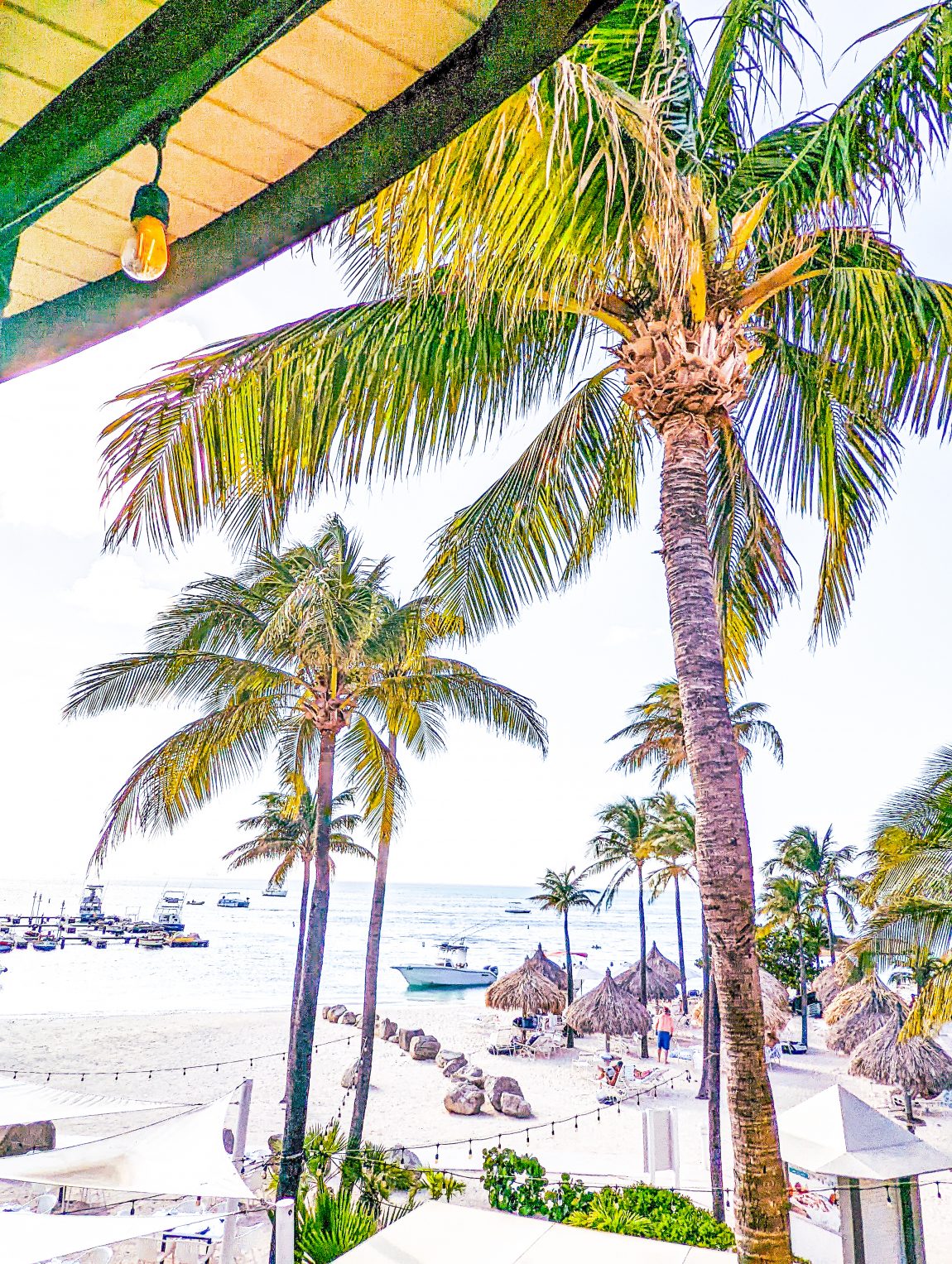As a West Indian girl who has traveled the Caribbean extensively, I took my time in booking a visit to Aruba. I had heard it was “one happy island” — but pictures of white sand beaches (which I already enjoyed since childhood in Grenada) and pink flamingos (which I see regularly in Florida) weren’t compelling enough for a visit. I crave the novelty of unique cultural destinations, and social media images of Aruba appeared to be the antithesis of that. This year though, I perked up when I heard about the murals in Aruba’s San Nicolas region. Also, when a fellow travel-lover shared pictures of the Natural Bridge, my curiosity was officially piqued. Propelled by my need for a warm, end-of-summer getaway, and a desire that it be an international trip to somewhere I’d never been, I decided to give Aruba a whirl.
The Language.
Upon arrival, I was greeted with my first pleasant surprise: Spanish language and music was everywhere! According to VisitAruba.com, “the mother-tongue of Aruba is Papiamento.” A language derived from Spanish, Portuguese, French, Dutch and African and Arawak languages, I was expecting to hear Papiamento and Dutch (since Aruba is a constituent country of The Netherlands). But I quickly learned that most Arubans are taught four languages in school — English, Spanish, Dutch and Papiamento — making it one of the most linguistically versatile islands I’ve ever visited. For this reason, I met locals who had relocated to Aruba from Colombia, Jamaica and the United States. Others spent time abroad in the Netherlands before coming back home to Aruba. The diversity of language permeates the Aruban atmosphere, infusing it with a sense of culture from the very beginning.
The Topography.
Previously, I had heard how flat and seemingly uninteresting Aruban topography was in contrast to the verdant mountains of other Caribbean islands like Saint Lucia, Grenada, Jamaica, or Puerto Rico. I thought I would miss those leafy forest vistas and mountainous landscapes. But in Aruba, I was fascinated by a rugged terrain of a different nature entirely. Britannica defines a coral island as a “tropical island built of organic material derived from skeletons of corals and numerous other animals and plants associated with corals.” While many Caribbean islands are volcanic islands, Aruba was also formed by coral reef, producing a jagged and textured terrain indicative of coral islands. Exploring the coral areas was so intriguing to me; I marveled at the fact that an island I had once dismissed was already teaching me so much.
The Environment.
Due to a local ordinance there’s no panhandling permitted on the beaches. This means no one disturbing your afternoon beach nap by offering to braid your hair or sell you a seashell necklace. And the island of Aruba is obsessed with eco-conservation. I noticed it on my first island excursion when the tour’s informational video included a note on how to properly dispose of trash to keep the island beautiful. I continued to notice how the food was served at my hotel (in bamboo plates and containers by the pool), or with wooden utensils and biodegradable packaging at other establishments. I dare you to find a plastic straw — it was quite uncommon.
Continue for my full island itinerary at medium.com!

No Comments